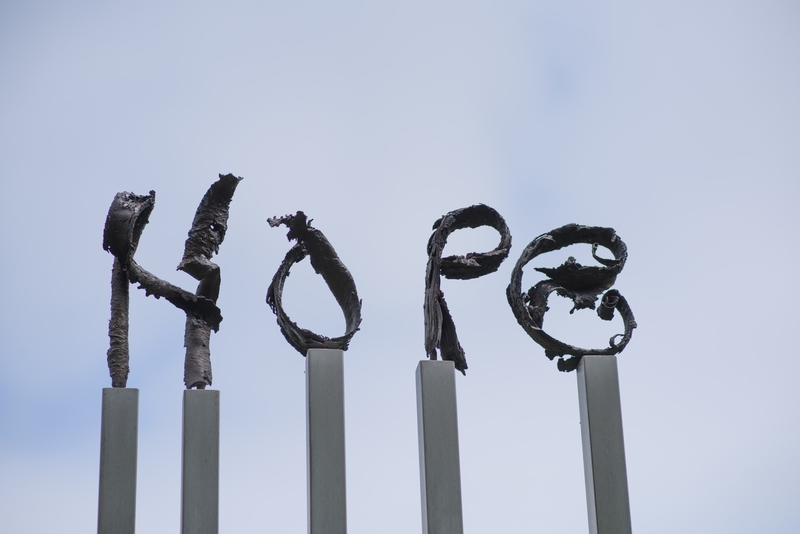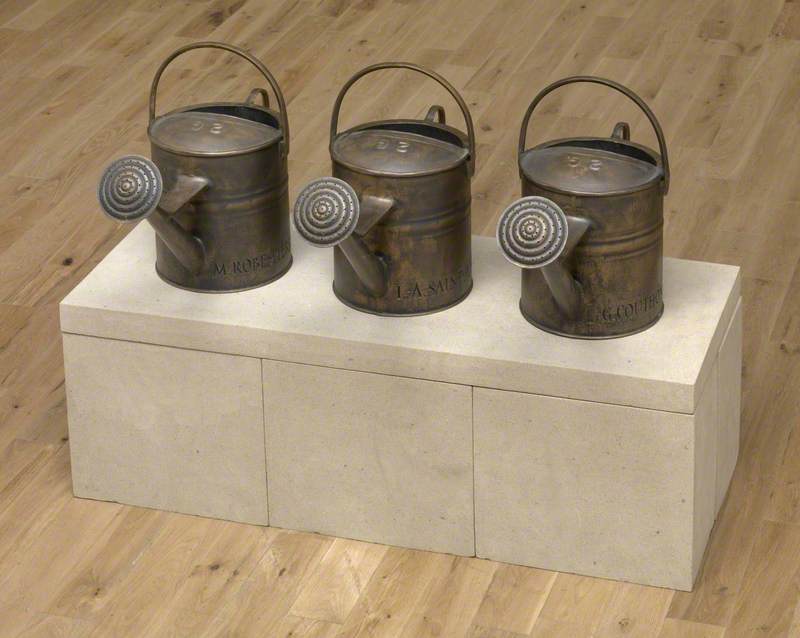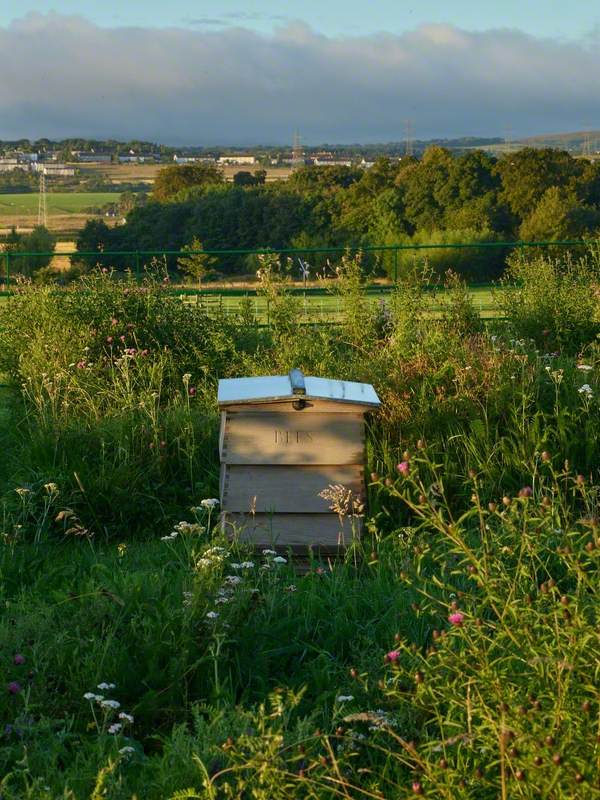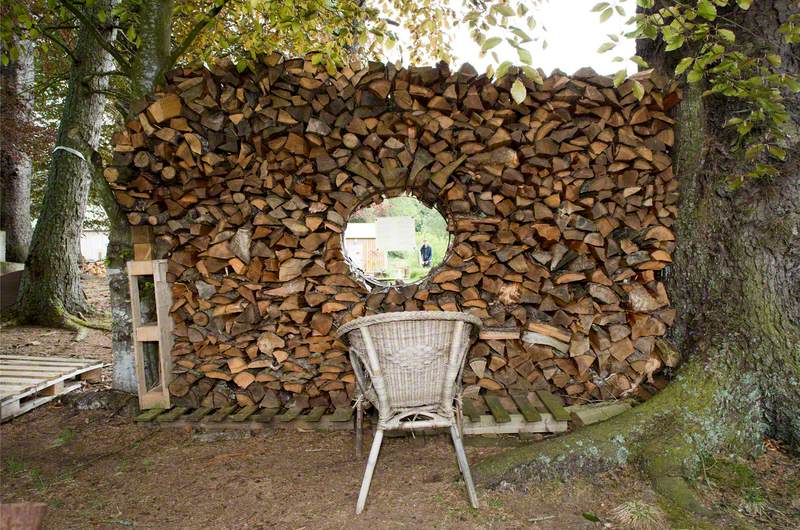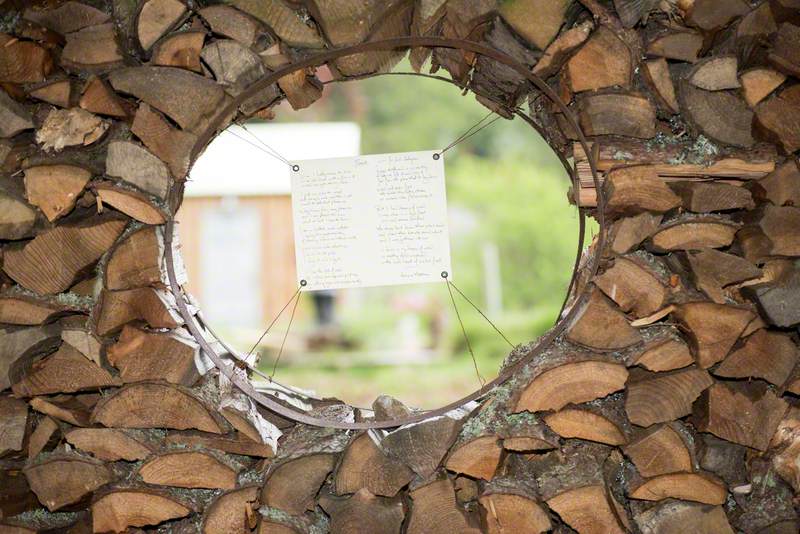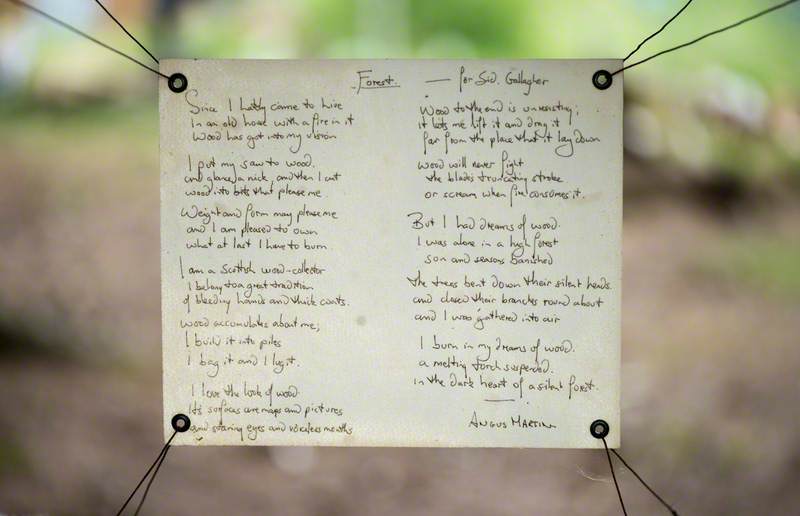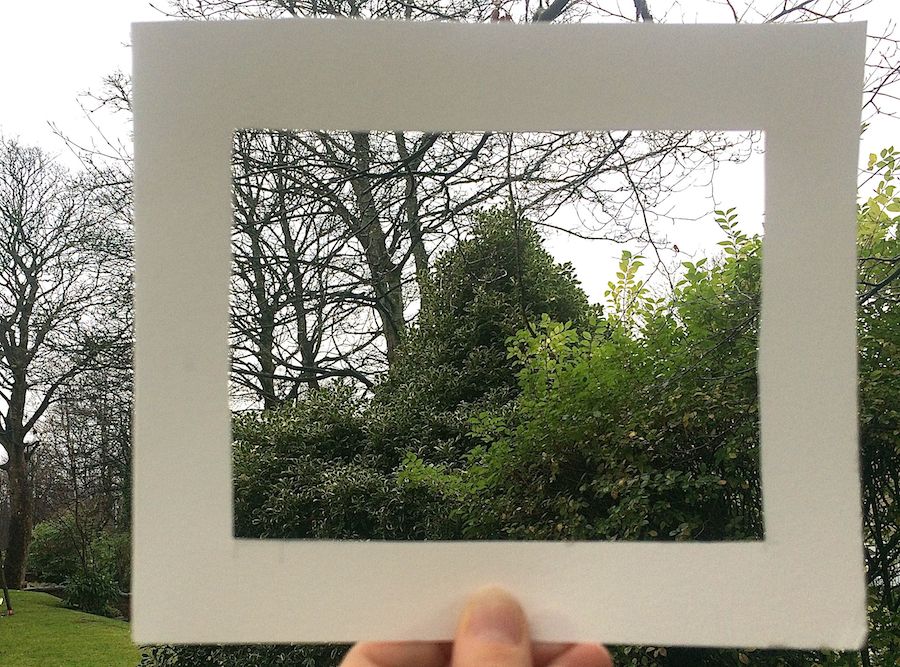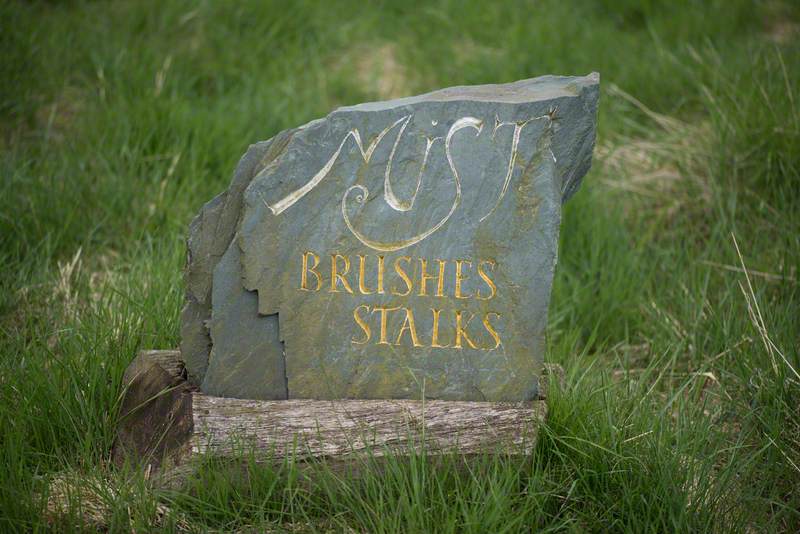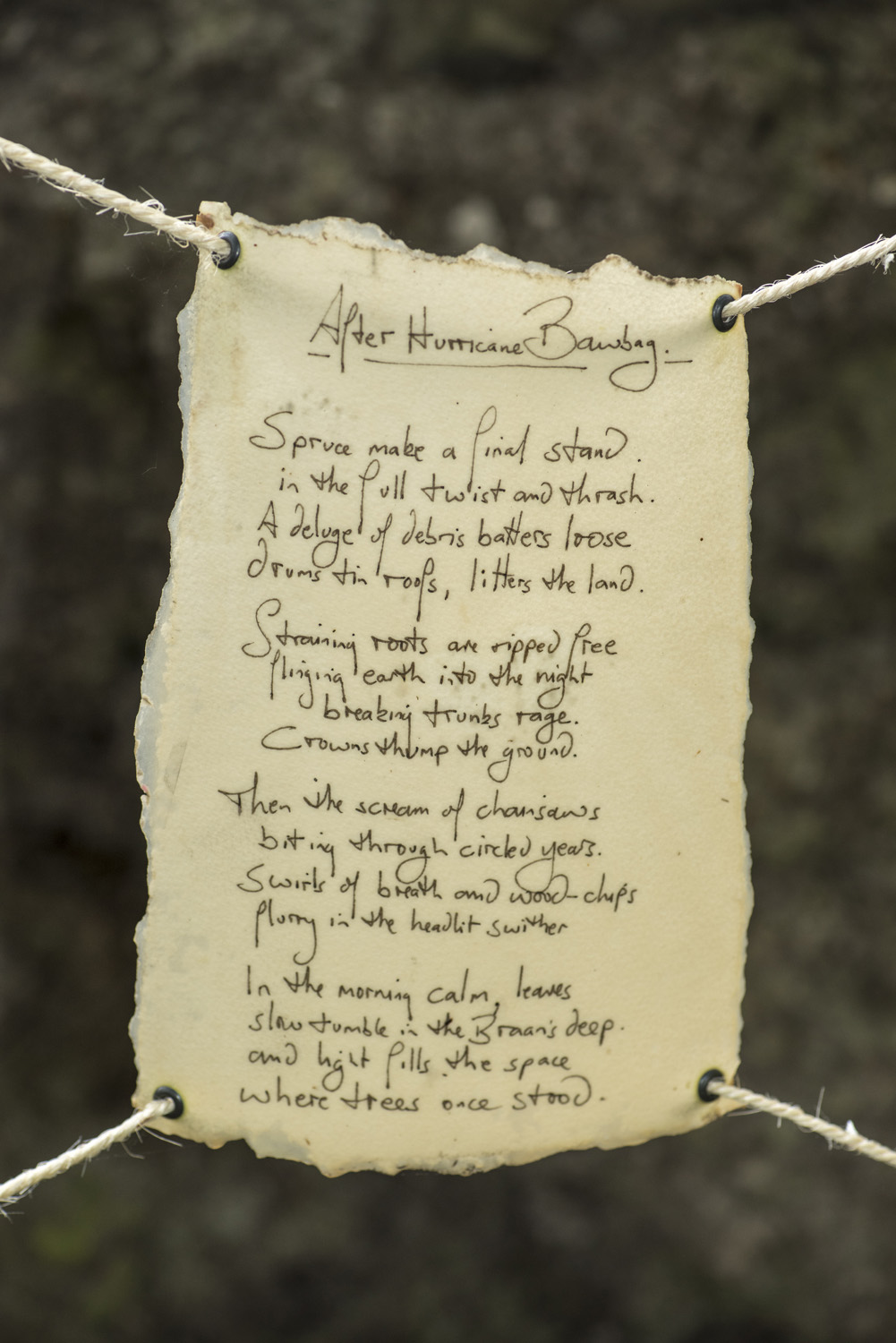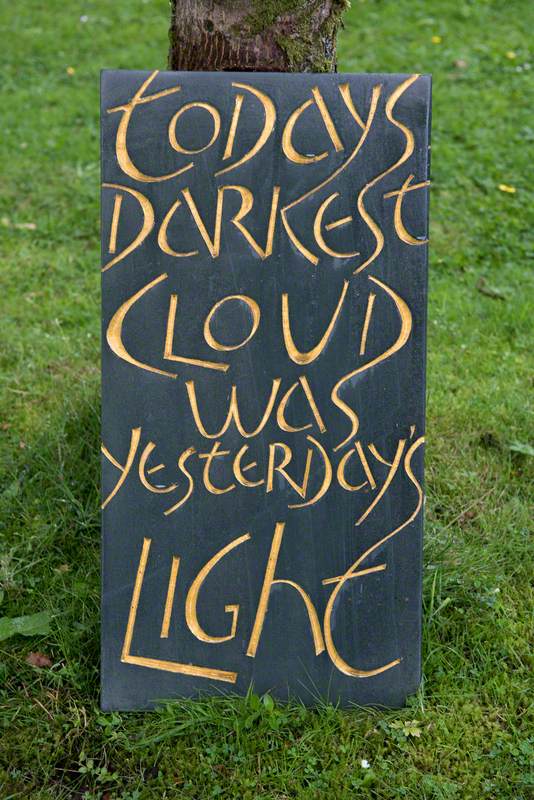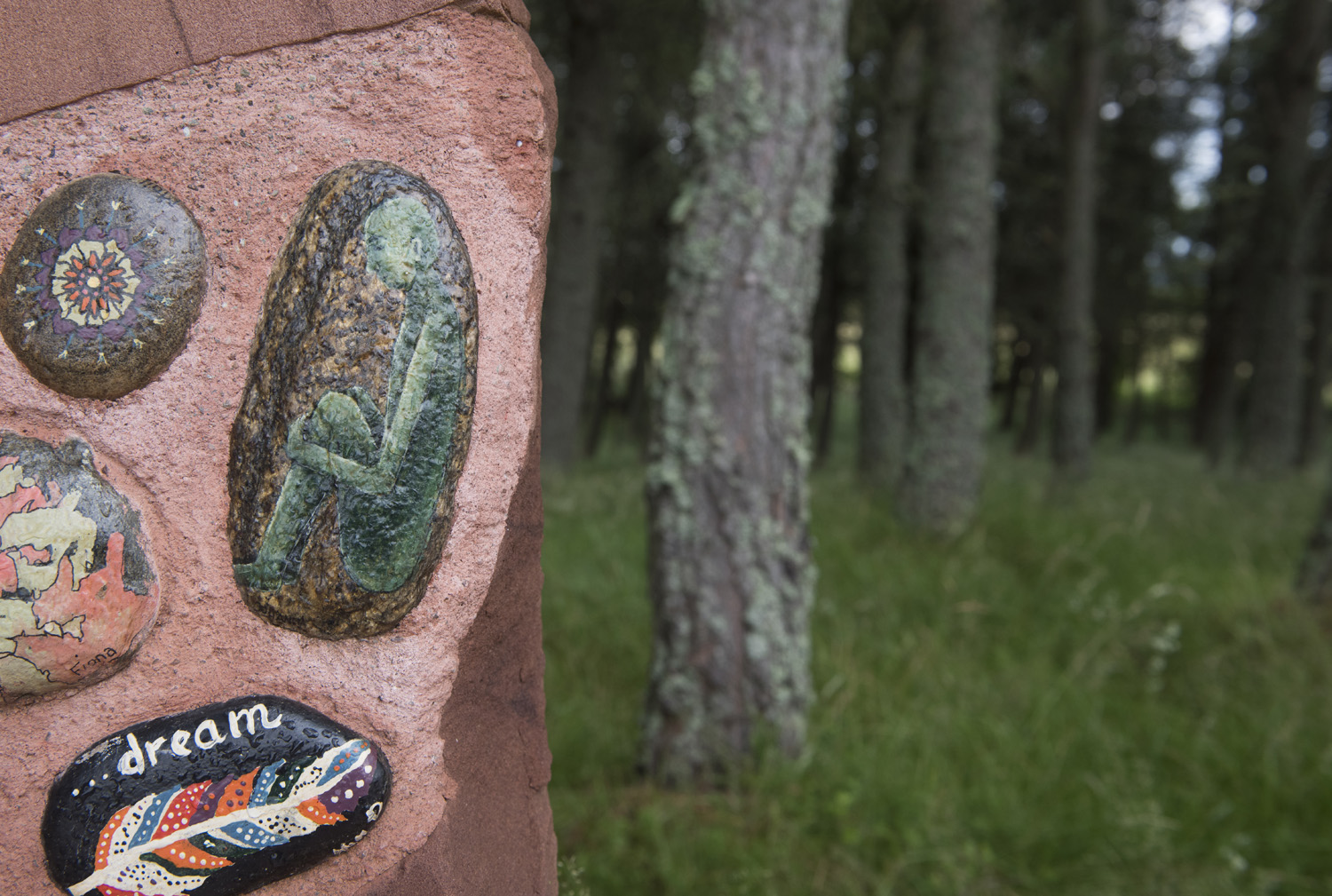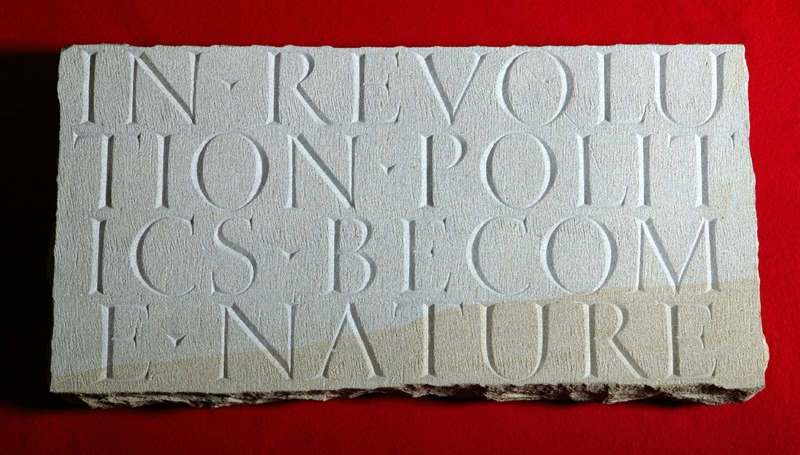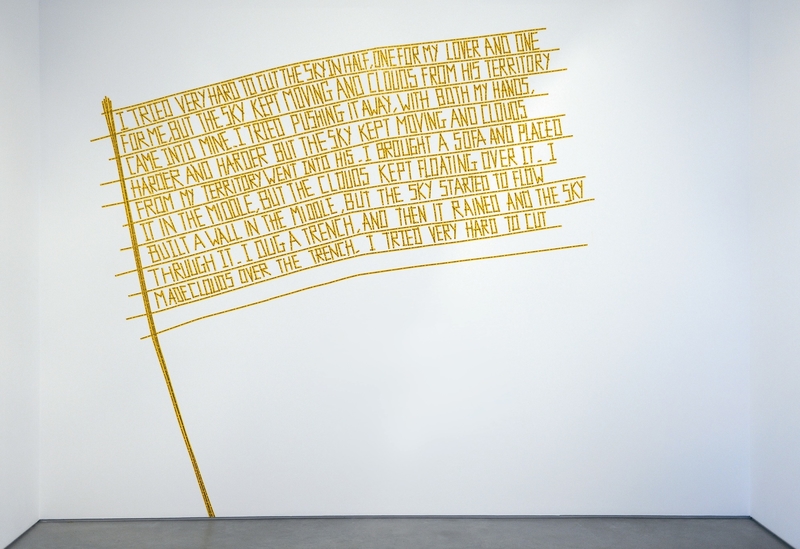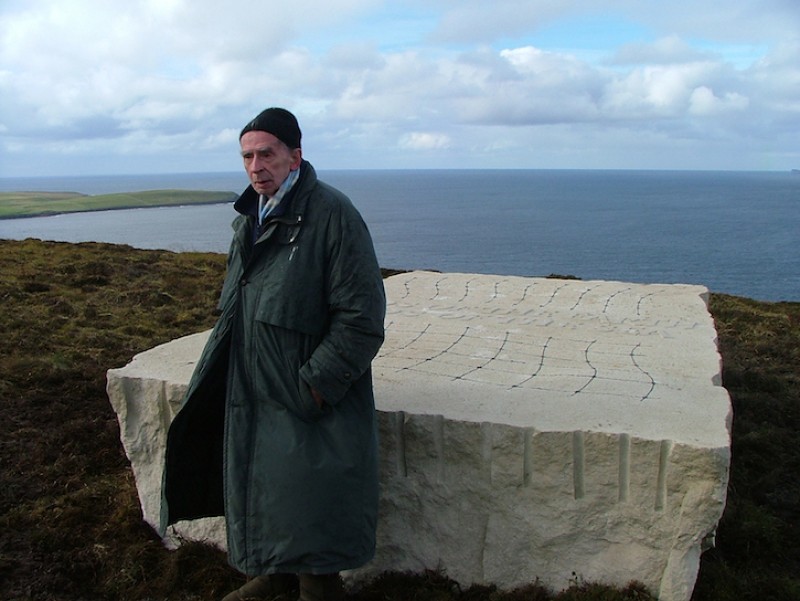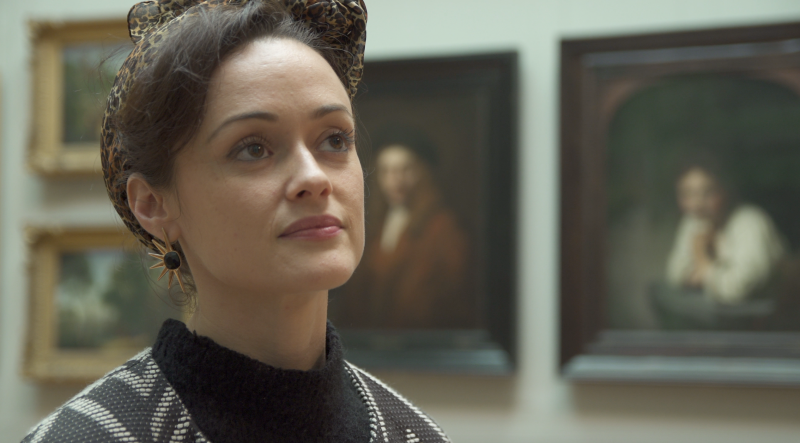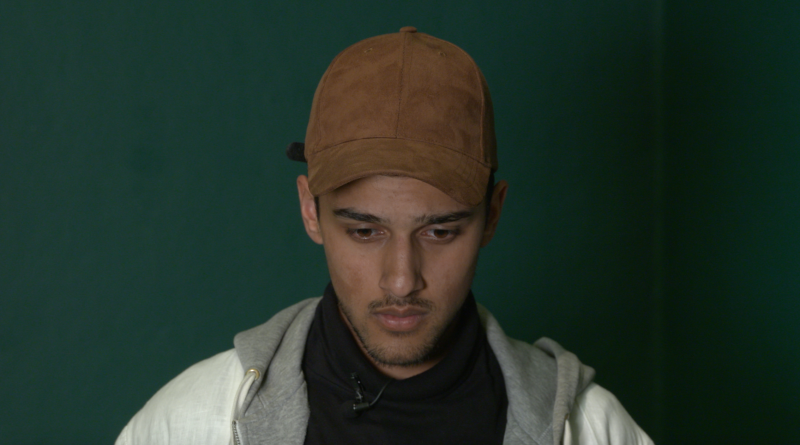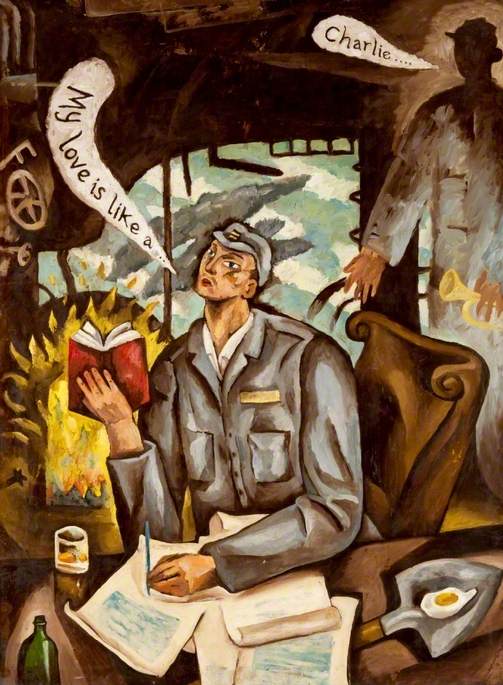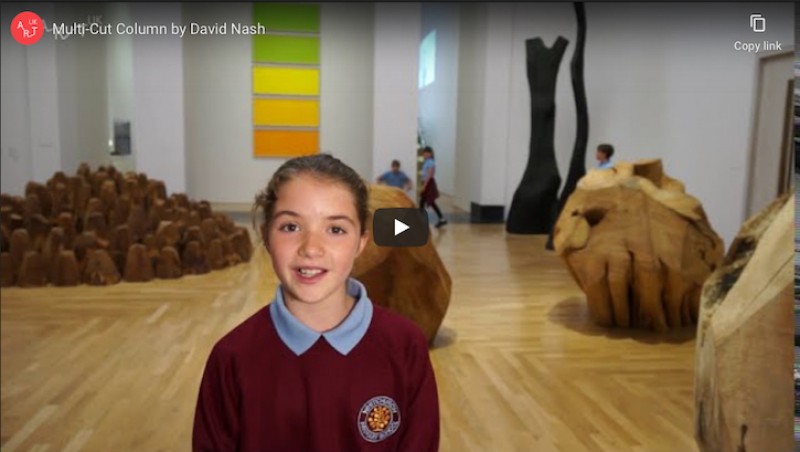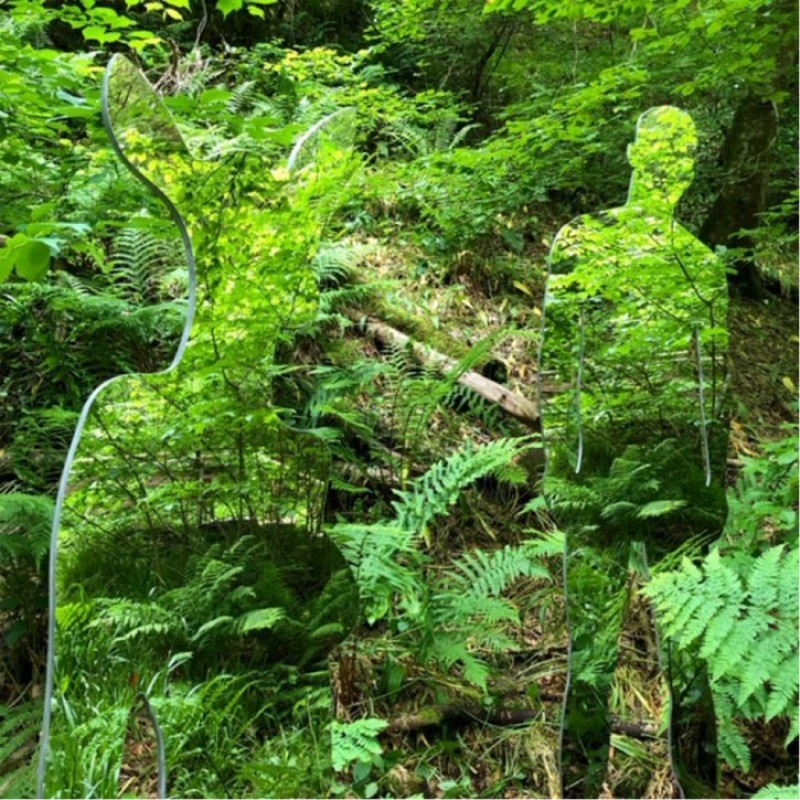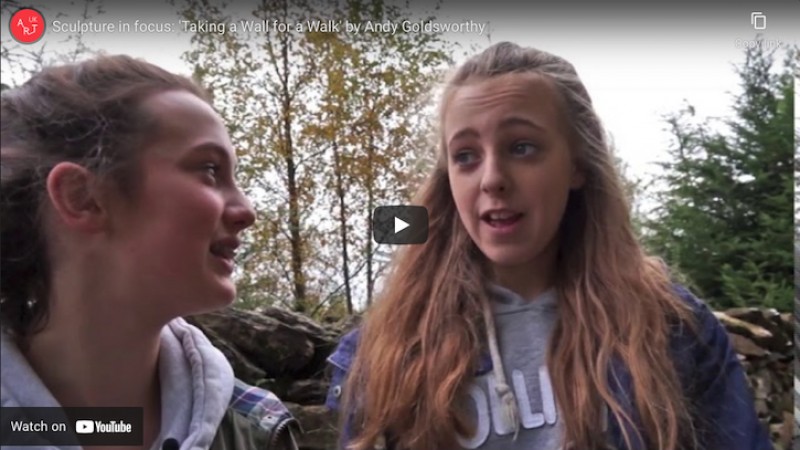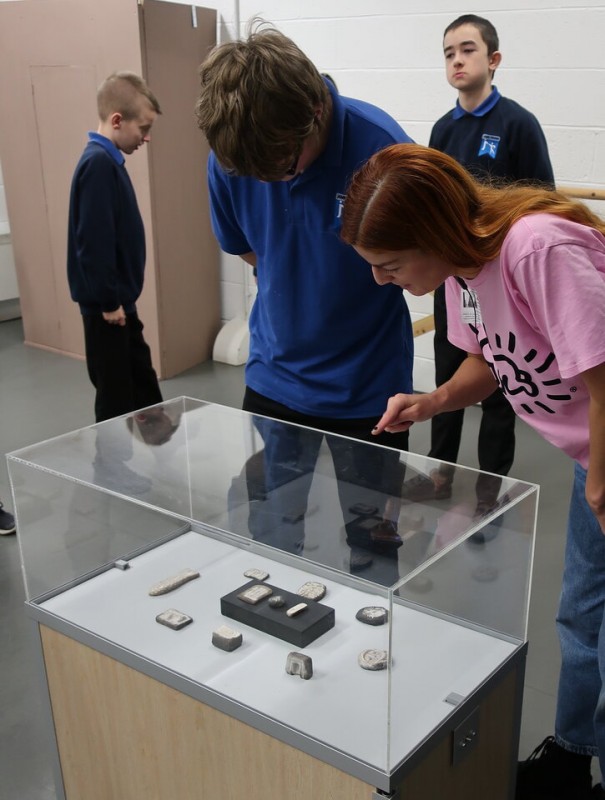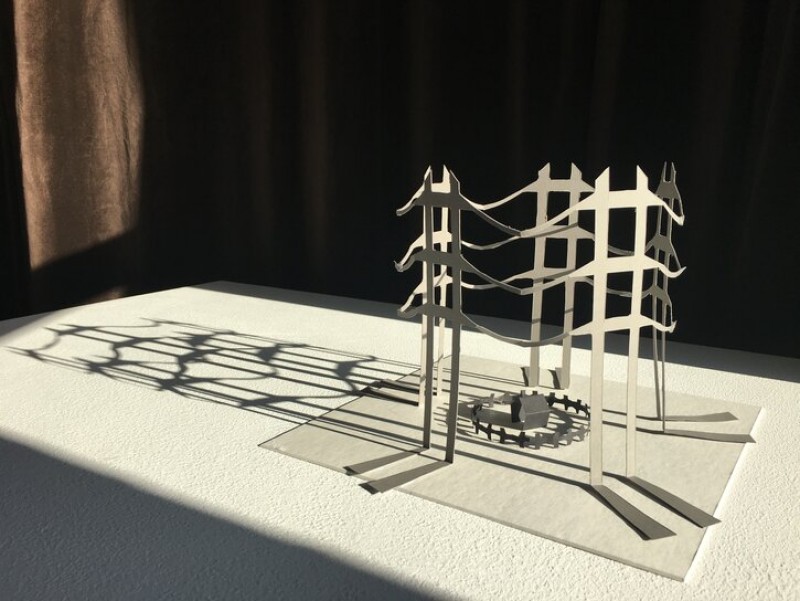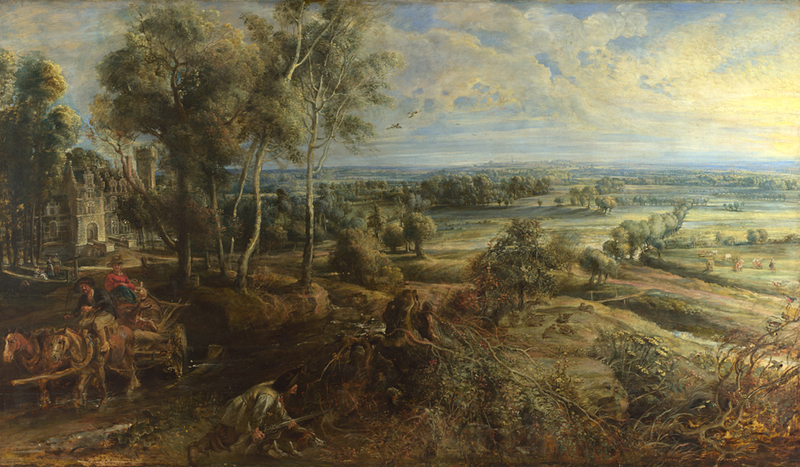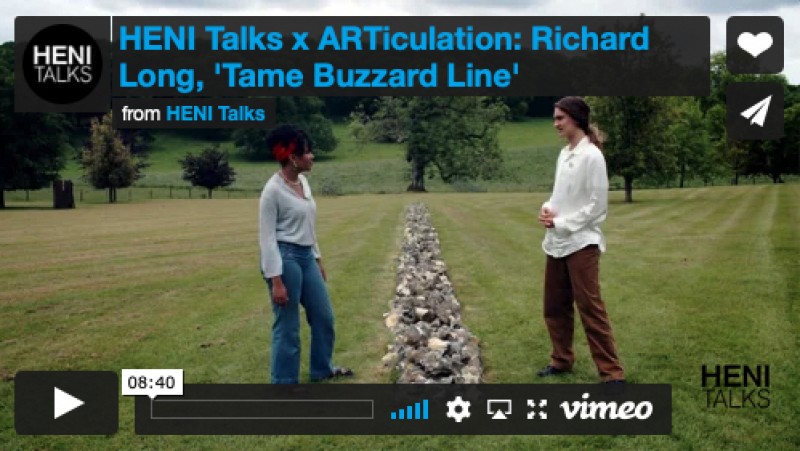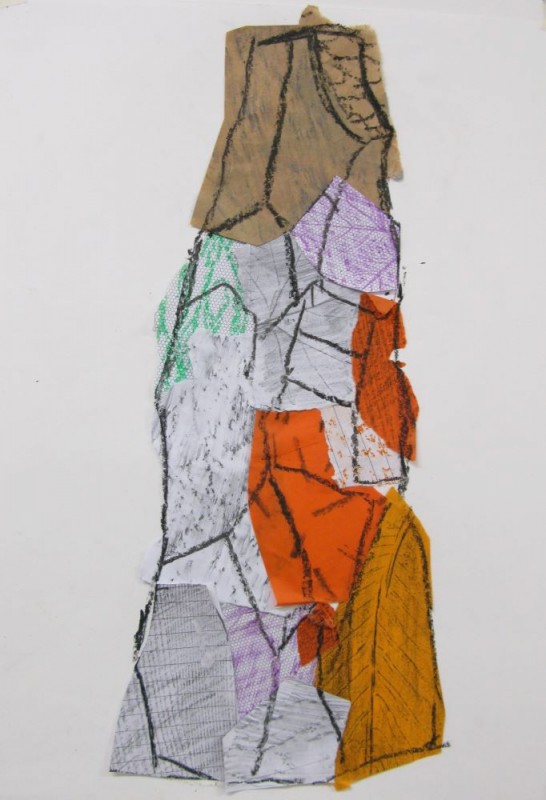Ian Hamilton Finlay's poem objects
Scottish poet and artist Ian Hamilton Finlay (1925–2006) often combined objects and text to explore a range of subjects from history and philosophy to nature and our relationship with it.
He became interested in the visual form of words in the early 1960s and began to write concrete poetry – a form of poetry in which the words are arranged in such a way that helps convey their effect and meaning.
He later took the idea of words having a physical presence to a new level by developing 'poem objects'. He carved his poems – which were sometimes short phrases or single words – into stone or onto plaques or made three-dimensional versions of words themselves so that they became objects, such as Drift (1968).
The word drift suggests drifting at sea. By wrapping the text in a fishing net Ian Hamilton Finlay emphasises the maritime reference. But the net also seems to undermine the meaning of the word by implying that the text is somehow caught and is no longer able to drift.
Hamilton Finlay also added text to objects. By juxtaposing text with, often ordinary or unlikely, objects he makes us think about and question the meaning of the words as well as the function of the object and its relationship to the words.
Art and landscape – Little Sparta
Ian Hamilton Finlay often placed his poem objects into landscape settings.
In 1966 he began to create a garden, called Little Sparta, at his home in the Pentland Hills in Southern Scotland. The garden combined his love of nature and his interest in giving visual form to ideas and words.
Find out more about Ian Hamilton Finlay and Little Sparta
This video made by Ingleby Gallery in Edinburgh takes us on a tour of Ian Hamilton Finlay's garden and shows us some of the poem objects he made for it.
Little Sparta – the Garden of Ian Hamilton Finlay (video)
- Watch the video with your students
- Can you spot the poem objects in the garden?
- Do you think that seeing the artworks outside in a natural environment would be very different from seeing them in a gallery? Why?
Activity: explore Beehives
Beehives 2009 is an artwork that Ian Hamilton Finlay made for the contemporary sculpture park Jupiter Artland in Scotland.
Five traditional beehives are carved with text. The text reads:
BEES; they lightly skim; and gently sip; the dimply river's brim; BOATS
Hamilton Finlay created the beehives in response to the pastoral atmosphere of Jupiter Artland's landscape, in particular the woodland and wildflower meadow.
Beehives
Ian Hamilton Finlay (1925–2006) 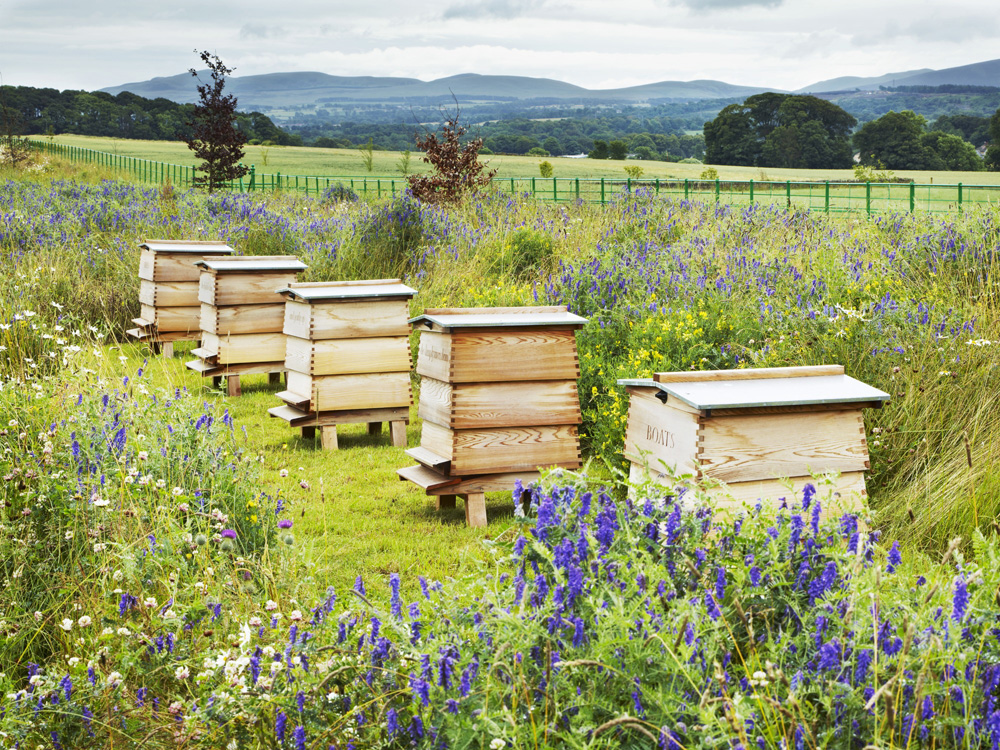
Beehives
Ian Hamilton Finlay (1925–2006) 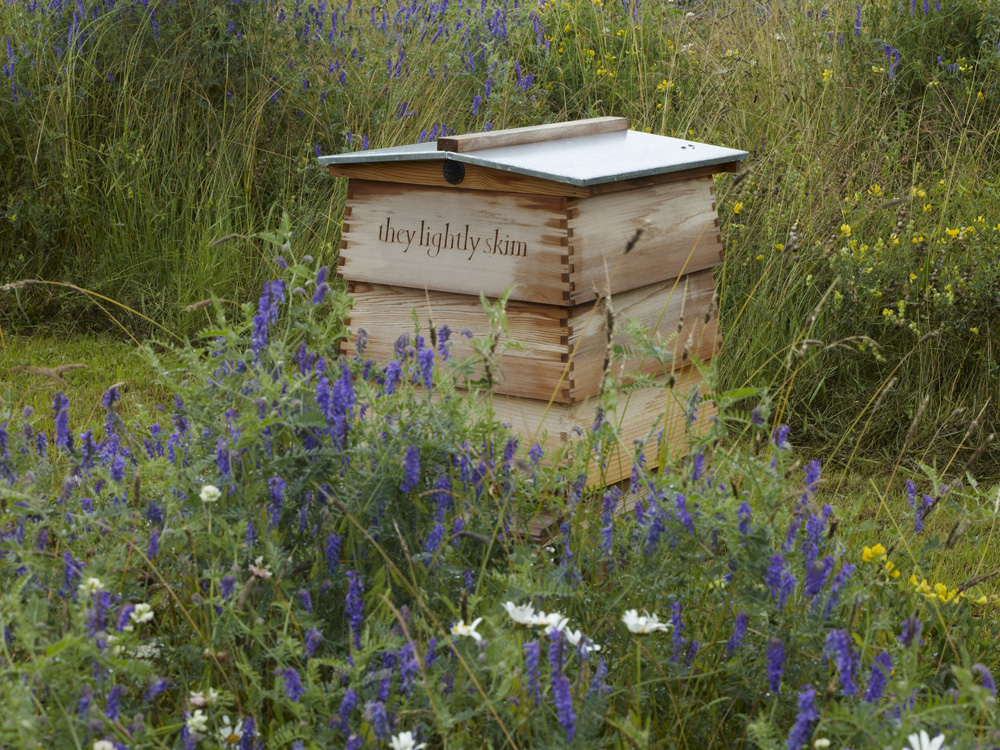
Discuss the artwork as a class. (Visit the artwork page on Art UK to see more views of it.)
Use these prompts if helpful:
- What do you think the words on the beehives are about?
- What do they make you think of, and feel?
- Does adding the words to the beehives change how you see the hives?
- Does splitting the text across the five beehives make you read it differently?
- Would you respond to the words differently if you saw them on a page?
- Why do you think Finlay has included the word BOAT on the last beehive?
Discussion thoughts
The words on the beehives suggest the movement and activity of the bees as they buzz around the wildflowers of the meadow sipping pollen. They also conjure up an image of summer days and the pastoral beauty of the landscape.
By adding the words to the beehives Hamilton Finlay changes the hives from being simply functional objects into something we contemplate. Splitting the words across the beehives perhaps echoes the flitting movement of the bees. It also makes us dwell on the words more as we read them strung out across the five surfaces.
If the words were on a page they would still be beautiful and suggest nature and the movement of the bees, but by placing the words within nature they become even more meaningful and evocative.
Hamilton Finlay often juxtaposed very different words or objects to make us think about words and their meaning. The word BOAT could be a continuous train of thought from the previous text that relates to the river. Finlay was also perhaps suggesting that the bees are like little boats picking up and dropping off their cargo of pollen. Or the word might refer to the beehives themselves, and their wooden structures appearing like boats among the sea of meadow grass surrounding them. Whatever the meaning, by adding BOAT to the end of the poem, Finlay makes us think about the word and what it might mean!
